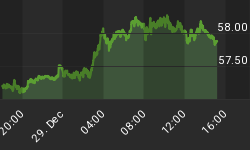Below is an extract from a commentary originally posted at www.speculative-investor.com on 11th April 2007.
A writer desiring to paint a bearish picture of US economic prospects and the US$ could choose to highlight the huge US current account deficit, because the word "deficit" has negative connotations. However, the huge current account deficit necessarily goes hand-in-hand with a capital account surplus of equal size; and "surplus" is a word with positive connotations. A writer desiring to paint a rosier picture could therefore choose to highlight the huge US capital account surplus.
Both writers -- the one citing the current account deficit as a problem and the one citing the capital account surplus as a benefit -- would, however, be missing an important point. The point is that neither a deficit nor a surplus on the current account (or the associated capital account) is, in itself, a positive or a negative. It all depends on what caused the deficit/surplus toarise.
To explain what we mean, we'll start with the popular argument that the large US current account deficit is a problem because it involves the US becoming increasingly indebted to the rest of the world. As Morgan Stanley's Stephen Roach -- a high profile worrier about global trade/investment imbalances -- is fond of saying: US$3.5B of foreign capital is needed each and every business day to finance the US current account deficit. According to Mr. Roach, the US will eventually run into the problem of being unable to finance its current account deficit, resulting in a collapse of the dollar's exchange value, a sharp rise in US interest rates and a plunge in US economic growth. From his perspective the trade/capital imbalance must be 'fixed' before it's too late.
But any thesis that begins with the notion that the large US trade/capital imbalance is a problem for which a solution must be found will be hopelessly flawed because the aforementioned imbalance is NOT a problem; rather, it is either the SYMPTOM of a problem or it is not indicative of any problem whatsoever. And in the former case, an economist who focused on reducing the imbalance would be akin to a doctor with a feverish patient who directed his attention toward cooling the patient down without taking into account WHY the patient was unusually warm.
We suspect that a lot of the confusion surrounding this issue stems from thinking about the US as an entity that runs a deficit on the current account and an offsetting surplus on the capital account. In practice, there is no such entity. Instead, what we have are billions of people throughout the world who are trading and investing with each other. When the effects of all these financial transactions are netted-out we find that the subset of the world's population that resides inside the US buys more 'stuff' from outsiders than it sells to outsiders; while the subset of the world's population that resides outside the US invests more money in US assets/debt than the US-based subset invests in foreign assets/debt.
The point is that the so-called trade/capital imbalance is the net effect of millions upon millions of individual decisions made voluntarily by people who believe that they will be better off as a result of their decisions. As such, an entity known as 'the US' does not have to come up with $3.5B of new capital each business day in order to 'finance' a deficit on its current account. Rather, this out-flow on the current account is simply the net result of transactions that could not have occurred in the first place unless there were sufficient external demand for dollars. It is therefore not reasonable to conclude that a large deficit on the current account is a problem, or is indicative of a problem, simply because it happens to exist.
To know if a current account deficit is indicative of a problem you first need to know WHY the deficit exists. In the US case, for instance, you need to know why people inside the US are generally finding it advantageous to buy more stuff from foreigners than they sell to foreigners, and why foreigners are generally finding it advantageous to do the opposite.
As discussed in previous TSI commentaries, our view is that the US's trade/capital imbalance has grown to such a tremendous size due to the relatively rapid rate at which its currency supply has expanded over the past ten years. In other words, we view the deficit on the current account as a SYMPTOM of an inflation problem (inflation is the cause, the huge current account deficit is one of the effects).
Inflation, we believe, has resulted in misdirected investment, reduced productivity and higher production costs within the US. At the same time, the normal effects on the prices of everyday items of a prolonged period of inflation have been masked by the massive increase in labour productivity within the emerging economies of the world (China and India, in particular). And the upward pressures on interest rates that would normally result from years of relatively high inflation have been largely absent due to a) the aforementioned masking of price increases, b) the large-scale purchasing of US debt securities by foreign central banks, and c) arbitrage related to Japan's near-zero interest rates. Lastly, high money supply growth combined with hardly any of the most visible NEGATIVE effects of inflation has helped maintain the illusion that the US economy is structurally sound, thus boosting foreign private-sector demand for the US dollar.
Obviously, if the US current account deficit is the result of an inflation problem then the only viable solution is to reduce the rate of inflation. However, it seems that everyone wants to focus on the symptom and no one wants to deal with the disease.
















